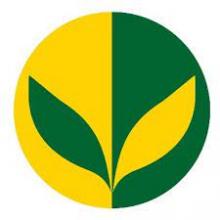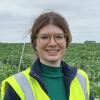EO4Agriculture (Using Earth Observation Data and Technology for Agriculture and the Climate) is a UKRI STFC-funded project being carried out by a range of teams in order to determine the potential of earth observation data and technology to address issues in the wider agricultural and and climate area. This is a joint venture between UK and Australia, as part of the joint UK-Australia agroclimate space programme. The EO4Agroclimate programme currently involves multiple scoping studies to research the opportunities for earth observation data and technologies in several areas, including pest and disease risks, agricultural emissions and their impacts, crop production and metrics, and blue carbon. ADAS is leading the scoping study on livestock and pasture systems.
Livestock and pasture scoping study
The Crop Physiology team at ADAS are carrying out the Livestock and Pasture scoping study as part of the wider EO4Agroclimate programme to determine the challenges which livestock and pasture farmers in the UK and Australia currently face, the technologies that are currently used to address these problems, and where the gaps and opportunities are within this area for further research and development of new products and technologies.
We are interested in contacting stakeholders within this field to answer the following questions:
- What are the main challenges and opportunities within livestock pasture and forage systems?
- What products or services that use earth observation technologies are available, or in development, to farmers and the supply chain?
- What opportunities are there for earth observation technologies to aid pasture and livestock management and the supply chain?
- Are there any research or knowledge gaps in this area?
The information gathered from this study aim to help build towards a larger future proposal to support the development of projects and research that address the challenges and gaps identified from our study.
Stakeholders Identified
| UK | Australia | |
| Governmental | ||
| Research Organisations | ||
| Agricultural companies and networks |
|
|
| Consultants |
|
|
| Satellites | ||
| Data companies | ||
| Universities | ||
| Software/tech |
Farm management apps and software
A summary of the grassland management apps we have identified in our research is summarised in the following table. There are currently no full-service management grassland apps in the UK or Australia that use satellite data to automatically record grass parameters including grass growth rate, biomass, yield as well as cutting and grazing events. Most apps involve the manual inputting of data by the farmer after completing farm walks to record paddock covers, either by estimation or measurement by rising plate meters. This manually inputted data can be translated into grass growth forecasts, which can be converted into the number of grazing days left in a particular field, prompting the movement of livestock.
|
Name |
Country |
Service |
Focus |
Notes |
|
AgriNet Grass |
UK |
Wedge, rotation planning, grass budget, benchmarking |
P |
Input rising plate meter measurements for calculation of various parameters |
|
AgriNet HerdApp |
UK |
Compliance |
L |
Record births, weights, drugs |
|
UK |
Marketplace, predictive growth, compliance, informed decisions on weigh scale |
L |
Record births, weights, drugs |
|
|
Aus. |
Maps, compliance, predictive growth |
P/L |
Track forage amounts, cattle locations, assign employee tasks. Originated in Australia, now in multiple countries |
|
|
Aus. |
NDVI, Biomass, Map |
P |
Integrates with Ceres Tag and AgriWebb |
|
|
UK |
Wedge, plan rotations, maps |
P |
Draw field boundaries and keep records. The app calculates grass cover and dry matter through satellite data. |
|
|
UK |
Map, NDVI, Wedge |
C/P/L |
Store and track data for a variety of farm types |
|
|
Aus. |
NDVI, Map |
C |
Originated in Aus. but now used globally. Free with option to buy higher resolution |
|
|
UK |
NDVI, Map, weather data, soil temperature and moisture |
C |
Variety of precision crop management farming tools and features |
|
|
Grass SAT |
UK |
Grass Wedge, grazing days, field ranking by grass cover |
P |
Satellite-based grass management and monitoring service for dairy farms |
|
UK |
NDVI, GCVI |
C |
AI-based imagery from SAR data alone, guaranteed every six days |
|
|
UK |
Daily proxy measurement of above-ground crop biomass |
C |
Combination of optical and radar data to give daily cloud-free imagery and data |
|
|
UK |
Grass biomass, compliance, soil fertility, 7-day predictive grass growth |
P, L |
Grass and mob management app to aid livestock farmers to increase grass production and utilisation. |
|
|
UK |
NDVI, soil parameters, nutrient mapping, variable rates, farm planning |
C, P |
Digital agronomy and precision farming service for arable and grassland businesses ran by Agrii. |
Current Research Projects
A summary of the current research projects we have identified during our investigation is summarised in the table below.
|
Project Name |
Focus |
Country |
Goal |
Stakeholders |
|
Farming Connect - Comparing systems of measuring grassland production |
Pasture |
UK |
Comparing the accuracy of plate meter readings and satellite imagery |
Welsh Government |
|
Pasture |
UK |
Collection of grazing measurements and grass quality samples alongside weather data to develop 7 and 14-day estimates for grass growth |
CIEL, AFBI, Rothamsted Research, the three GB meat levy bodies and industry sponsors |
|
|
Pasture |
UK |
The development of a digital solution to deliver weekly data and insights on current and projected grass biomass and carbon budgets |
Environment Systems, University of Edinburgh, Soil Association |
|
|
Pasture, Livestock |
Aus. |
Reach a profitable, sustainable, and socially acceptable, carbon neutral red meat sector by 2030 |
University of Tasmania, MLA, CSIRO, NSW Department of Primary industries, and more. |
|
|
Pasture, Livestock |
Aus |
Produce machine learning models to remotely predict animal performance and pasture availability |
Food Agility, NSW Department of Primary Industries, Pasture.io |
|
|
Pasture |
Aus |
Produce a new carbon measurement tool using remote sensing of biomass and vegetation as proxies |
Food Agility, AACo, Cibo Labs, FLINTpro, Carbon Link, UTS, FUA, CSU |
|
|
Pasture |
UK |
Co-develop sustainable permanent grassland systems and policies with farmers and policy makers to enhance productivity and biodiversity of grasslands | ADAS, Newcastle University, University of Aberdeen, AFBI and more |
Research Summary
During our research, we have identified a wide range of UK and Australian-based stakeholders, including governmental, research organisations, software companies and independent consultants, who would be valuable participants in ongoing research originating from the findings from this scoping project.
A summary of the research challenges and opportunities that we have identified during our investigations and conversations with stakeholders are presented in the following table.
|
Group |
Challenges |
Opportunities |
|
Governmental |
UK – Brexit means new ways of funding farmers need to be found Australia – Need to incentivise farmers to practice carbon-friendly farming Both – Need to meet environmental targets, net-zero carbon goals |
Ability to use data for compliance e.g., no overwinter fallow, stocking numbers Monitoring/surveying farm practices New avenues to replace CAP through STI e.g., carbon capture |
|
Academia and research |
Acquisition of funding High impact research outputs |
Collaboration with other Universities and companies Research publications – raising the profile Funding/PhD students/Postdocs |
|
Business and commercial |
Make sure the product is saleable and commercial The development of earth observation technologies is costly |
Involvement in the project will mean access to research outputs that could incorporate into existing apps/technologies Advertisement and collaboration. |
|
Farmers |
Measuring grass is time-consuming Fixing and moving fencing costs time and money Lack of trust in technology to measure accurately Lack of training and knowledge to work with technology Lack of signal in rural areas |
Satellite grass measuring with rotational grazing = enhanced grass growth, reduced food bills, reduced time – no more plate meter measuring GPS tracking/virtual fencing = reduced labour costs Development of technologies that can work offline and sync when online. |
|
Farm advisors |
Field surveying and monitoring are limited by time and the ability to walk around lots of fields |
Move towards using tools and technologies to save time and enabling the monitoring of more of the farm more precisely More clients and more accurate advice? |








